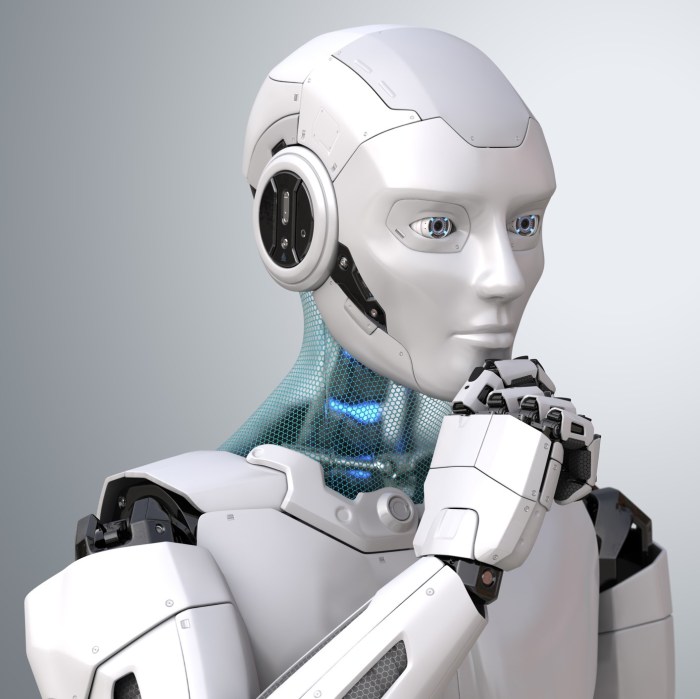Humanoid robots are learning to fall well, a development that could revolutionize their interaction with the world. As these robots become more integrated into our lives, the ability to safely navigate uneven terrain, interact with humans, and perform tasks in hazardous environments is crucial. Falling well is no longer just a matter of avoiding damage to the robot itself; it’s about ensuring the safety of those around them.
Imagine a future where robots assist with construction, deliver packages in crowded city streets, or even care for the elderly. In these scenarios, the potential for falls is significant. But with advancements in sensor technology, algorithms, and robot design, humanoid robots are becoming increasingly adept at falling safely, minimizing the risk of injury or damage.
The Importance of Falling Well
In the world of robotics, where humanoid robots are increasingly being deployed in diverse environments, the ability to fall safely is no longer a mere novelty but a crucial aspect of their design and functionality. Just like humans, robots can encounter unexpected obstacles or lose their balance, making it imperative for them to master the art of falling gracefully. This skill is not just about avoiding damage to the robot itself but also ensuring the safety of humans and the surrounding environment.
The Significance of Mastering Falling Techniques
Falling well is not simply about avoiding a tumble; it’s about minimizing damage to the robot and its surroundings. The ability to fall safely is crucial for robots operating in various environments, particularly those with uneven terrain, potential obstacles, or close proximity to humans.
- Navigating Uneven Terrain: Humanoid robots designed for tasks such as exploration, search and rescue, or even simple domestic chores often encounter uneven terrain. Mastering falling techniques allows them to navigate these environments without sustaining damage, ensuring they can continue their mission without interruption.
- Interacting with Humans: In environments where robots collaborate with humans, the ability to fall safely is paramount. A robot that can safely fall prevents injury to itself and surrounding humans, fostering trust and safety in human-robot interaction.
- Performing Tasks in Hazardous Environments: Robots working in hazardous environments, such as construction sites or disaster zones, face numerous risks. Falling safely is essential to protect the robot from damage and ensure it can continue its task, even in challenging conditions.
Techniques for Safe Falling: Humanoid Robots Are Learning To Fall Well
Humanoid robots are becoming increasingly sophisticated, performing complex tasks in various environments. However, navigating these environments safely requires them to be able to fall gracefully, minimizing damage to themselves and their surroundings. This ability is crucial for robots operating in dynamic settings, where unexpected obstacles or disturbances can cause them to lose balance.
Techniques for Safe Falling
Robots are learning to fall well by incorporating techniques inspired by human and animal movements. These techniques aim to minimize impact forces and prevent damage to the robot’s body and sensitive components.
Techniques for Safe Falling
| Technique Name | Description | Advantages | Disadvantages |
|---|---|---|---|
| Controlled Collapse | The robot intentionally collapses its body, spreading the impact force over a larger area. This technique involves strategically bending joints and adjusting the center of gravity to direct the fall. | Minimizes impact forces, reduces risk of damage to sensitive components. | Requires precise control and coordination, might not be effective in all scenarios. |
| Roll and Recovery | The robot uses a combination of rolling and pivoting movements to redirect the fall and regain balance. This technique involves a sequence of controlled movements, similar to how humans roll to break a fall. | Effective in mitigating impact forces, allows for quick recovery and regaining balance. | Requires advanced control algorithms and sensor feedback, might be challenging to implement in confined spaces. |
| Impact Absorption | The robot incorporates shock absorbers or compliant materials in its body, designed to absorb impact forces during a fall. This technique uses specialized materials and structures to cushion the impact and protect sensitive components. | Reduces impact forces, protects internal components, can be tailored to specific fall scenarios. | Can add weight and complexity to the robot’s design, might not be suitable for all applications. |
| Multi-Axis Control | The robot utilizes multiple degrees of freedom in its joints to adjust its posture and minimize impact forces. This technique allows the robot to distribute impact forces across different parts of its body, reducing stress on individual components. | Offers flexibility in adapting to different fall scenarios, allows for more controlled and precise movements. | Requires sophisticated control algorithms and sensor feedback, can be computationally expensive. |
Impact of Falling on Robot Design
The need for safe falling has significantly impacted the design of humanoid robots, pushing engineers to develop innovative solutions to mitigate the risks associated with falls. By incorporating design features that enhance stability and minimize impact forces, these robots can withstand falls without sustaining damage or compromising their functionality.
Design Features for Fall Mitigation, Humanoid robots are learning to fall well
The design of humanoid robots has evolved to incorporate features that enhance their ability to withstand falls. These features work together to minimize the impact of a fall and prevent damage to the robot’s delicate components.
- Flexible Joints: Robots with flexible joints can absorb impact forces by bending and twisting, reducing the stress on their internal components. This flexibility allows them to adjust their posture during a fall, minimizing the force transmitted to their frame. For example, the joints of the Boston Dynamics Atlas robot are designed to be highly flexible, allowing the robot to land on its feet and absorb impact forces without sustaining damage.
- Shock-Absorbing Materials: The use of shock-absorbing materials, such as polymers and composites, in robot construction can effectively dissipate impact forces. These materials can be strategically placed in areas prone to impact, such as the robot’s feet and torso, to cushion the blow and prevent damage to internal components. For instance, the SoftBank Robotics Pepper robot incorporates shock-absorbing materials in its lower body, protecting its delicate sensors and actuators during falls.
- Distributed Weight: A well-distributed weight distribution helps to maintain stability and minimize the impact of a fall. By distributing the weight evenly throughout the robot’s body, engineers can reduce the forces acting on individual joints and components during a fall. For example, the Honda Asimo robot’s weight is evenly distributed throughout its body, enabling it to maintain balance and absorb impact forces during falls.
Future Directions in Falling Research
Falling research for humanoid robots is a burgeoning field with exciting prospects for improving robot safety and performance. As robots become more integrated into our lives, the ability to fall safely and recover gracefully is crucial for their acceptance and widespread adoption.
Advancements in Sensors and Algorithms
Advancements in sensors and algorithms play a pivotal role in enhancing robot fall safety. By providing robots with a more comprehensive understanding of their surroundings and internal state, these technologies can improve their ability to predict and mitigate falls.
- Enhanced proprioceptive sensors: More precise and sensitive sensors can provide robots with a better understanding of their body position, joint angles, and movement. This information is crucial for predicting potential falls and initiating timely corrective actions. For example, advanced force sensors embedded in robot limbs can detect subtle changes in ground contact, alerting the robot to potential instability.
- Improved vision systems: Advanced computer vision algorithms can enable robots to recognize potential hazards in their environment, such as obstacles, uneven terrain, and slippery surfaces. This information can be used to adjust gait patterns and avoid hazardous situations.
- Real-time fall detection algorithms: Sophisticated algorithms can analyze data from multiple sensors, including proprioceptive sensors, vision systems, and inertial measurement units (IMUs), to detect falls in real-time. This allows for rapid response and potentially prevents severe impacts.
The development of safe falling techniques for humanoid robots is a testament to the remarkable progress in robotics. As research continues, we can expect even more sophisticated algorithms, sensors, and robot designs that will further enhance fall safety. The future of robotics holds exciting possibilities for robots that can seamlessly navigate our world, performing complex tasks while ensuring the safety of themselves and those around them. The ability to fall well is not just a technical feat; it’s a crucial step towards a future where robots and humans can co-exist harmoniously.
Humanoid robots are getting better at navigating the world, even when it means taking a tumble. Just like how Ethiopian fintech Equb is digitizing peer-to-peer credit at Mobile World Congress , revolutionizing financial access, robots are learning to adapt and recover from unexpected situations. This ability to fall well is crucial for robots that need to move around in complex environments, like our homes or workplaces.
 Standi Techno News
Standi Techno News

